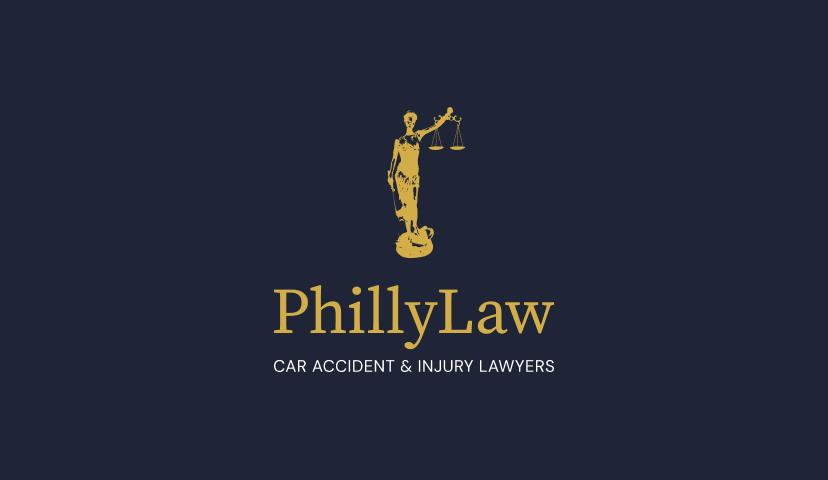Table of Contents
Head Injuries From Car Accidents
Head injuries in car accidents primarily occur due to sudden and forceful impacts. When a vehicle stops abruptly during a collision, the inertia can cause occupants’ heads to strike elements within the car, such as the steering wheel, dashboard, windows, or seats. Additionally, flying debris from the crash can also lead to head injuries by striking the head directly.
Less visibly, the rapid acceleration and deceleration of the crash can cause the brain to move within the skull, potentially leading to concussions or more severe brain injuries. If you or a loved one has suffered head injuries as the result of a car accident, contact the experienced car accident attorneys at PhillyLaw for a free consultation to help you recover compensation for your injuries or a family member’s death as a result of their head injury.
Common Types of Head Injuries
Common types of head injuries resulting from car accidents include concussions, contusions, skull fractures, and traumatic brain injuries (TBIs).
Concussions
Concussions are typically caused by a sudden blow or jolt to the head, leading to temporary disruption in brain function. Symptoms of a concussion can vary widely, including headache, confusion, dizziness, ringing in the ears, nausea, and sometimes loss of consciousness. Some individuals may also experience delayed symptoms such as concentration and memory problems, irritability, and sensitivity to light and noise.
Contusions
Contusions refer to bruises or bleeding on the brain, often occurring at the site of impact. Contusions can result from the brain striking against the inner wall of the skull due to the sudden halt or impact during a car accident. This type of injury can vary in severity, from minor bruises that may heal on their own to more serious contusions that could lead to swelling and pressure inside the skull, necessitating immediate medical attention.
Skull Fractures
Skull fractures signify a break in the skull bone which can sometimes lead to further injury to the brain beneath. Skull fractures can vary in severity, location, and impact on the victim, depending on the force and direction of the collision. They are classified into several types including linear, depressed, diastatic, and basilar fractures.
Linear fractures, the most common type, involve a break in the cranial bone resembling a thin line without splintering, depression, or distortion of the bone. Despite their frightening appearance, linear skull fractures often heal without surgical intervention. In contrast, depressed skull fractures occur when part of the skull is crushed and pressed inward towards the brain, posing a higher risk of brain damage and often requiring surgical intervention to relieve pressure on the brain.
Diastatic fractures affect the sutures of the skull and are more common in infants and young children, where the impact causes the sutures to widen. Lastly, basilar fractures involve a break in the bone at the base of the skull, characterized by bruising around the eyes or behind the ears and can be associated with cerebrospinal fluid leaks. Each type of skull fracture after a car accident necessitates immediate medical attention to diagnose the extent of the injury and implement appropriate treatment to prevent complications.
Secondary Brain Injury
Secondary brain injury refers to the progressive and potentially more damaging consequences that follow the initial impact or trauma, often developing in the hours or days after the initial head injury. Unlike the immediate damage caused by the primary brain injury, which is typically finite and localized, secondary brain injuries result from the body’s physiological response to the initial trauma. These can include increased intracranial pressure, cerebral edema (swelling of the brain), infectious complications, and alterations in blood flow to the brain. These conditions can lead to further brain damage and significantly worsen the outcome for the injured individual. Preventing or mitigating secondary brain injuries through vigilant monitoring and timely medical intervention is crucial for improving recovery prospects.
Traumatic Brain Injuries
Lastly, Traumatic Brain Injuries range from mild cases (such as concussions) to severe injuries that can result in long-term complications or death. Identifying the specific type of brain injury is critical for administering the appropriate treatment and facilitating recovery.
Mild Versus Severe Head Injuries from Car Accidents
If you are experiencing symptoms following a car accident, distinguishing between mild and severe head injuries is crucial. It is essential to seek immediate medical attention if you exhibit any of these symptoms, as early diagnosis and treatment can significantly impact recovery outcomes.
Mild Head Injury Symptoms
Mild head injuries, while not as immediately alarming as their severe counterparts, still require attention and proper care. After a car accident, individuals with mild head injuries may notice symptoms such as a slight headache that persists or comes and goes, a sense of disorientation or confusion that resolves relatively quickly, mild dizziness, a temporary ringing in the ears, and slight nausea without vomiting. Experiencing any level of consciousness loss very briefly, or even just feeling “dazed” or “out of it” for a short period, can also indicate a mild head injury. It’s crucial to monitor these symptoms closely, as they can sometimes lead to more serious conditions if not addressed.
Severe Head Injuries
Severe head injuries require immediate medical attention due to their potentially life-threatening nature. Following a car accident, symptoms of a severe brain injury can vary widely but often include prolonged unconsciousness or coma, profound confusion, seizures or convulsions, worsening headaches, repeated vomiting or prolonged nausea, unresponsiveness, clear fluids draining from the nose or ears, an inability to move one or more limbs, slurred speech, and agitation or combativeness. These symptoms represent significant trauma to the brain and necessitate urgent intervention by healthcare professionals to mitigate long-term damage, prevent permanent brain damage, and improve the prognosis for recovery.
Traumatic Brain Injury
Traumatic Brain Injury (TBI) is a form of acquired brain injury that occurs when a sudden trauma causes damage to the brain. It can result from a blow or jolt to the head that disrupts the normal function of the brain. TBIs can range from mild, commonly known as concussions, where there is a temporary impairment of brain functions, to severe, where there is an extensive period of unconsciousness or amnesia after the injury. The severity of a TBI can vary greatly depending on the extent of the damage and the area of the brain affected. Traumatic brain injuries caused physical impairments, cognitive impairments, emotional instability, and sensory problems. Given its complexity and the wide spectrum of possible outcomes, TBI requires prompt and comprehensive medical evaluation and treatment.
Concussion
A concussion, as a form of Traumatic Brain Injury (TBI), is primarily caused by a direct blow or jolt to the head, transferring force to the brain and leading to a temporary disruption in its function. Concussions are widely acknowledged as the most common type of TBI and are frequently regarded as being on the milder end of the TBI spectrum. Despite being considered mild, concussions should not be taken lightly, as they can lead to a variety of symptoms that may impact an individual’s cognitive functions, physical capabilities, emotional state, and sleep patterns. Symptoms can include confusion, headaches, dizziness, blurred vision, memory loss, sensitivity to light or noise, balance problems, and mood changes. It’s crucial to understand that even a “mild” concussion can have serious, prolonged effects, necessitating proper diagnosis, rest, and gradual return to activities under medical supervision to ensure a full recovery.
Axonal Injury
Axonal injury is a type of trauma that occurs at the level of the brain’s neurons, specifically affecting the long, slender projections of these cells known as axons. This form of injury is often associated with diffuse axonal injury (DAI), a common and devastating outcome of traumatic brain injury. Axonal damage results from the brain moving back and forth in the skull rapidly, causing the axons to stretch, tear, or shear.
Unlike other forms of brain injury that might be localized to a specific area, axonal injuries typically affect multiple regions of the brain, leading to widespread disruption in neural networks and, consequently, in cognitive, physical, and behavioral functions. The severity can range from mild, causing temporary neurological disruptions, to severe, resulting in long-term impairment or death. Identifying and treating axonal injuries early is critical for the recovery process, underscoring the need for immediate medical attention following any incident that might involve head trauma.
Symptoms of Traumatic Brain Injuries
Symptoms of Traumatic Brain Injuries (TBIs) can manifest across physical, cognitive, emotional, and sensory dimensions, each varying in severity and duration. Physically, individuals may experience headaches, nausea, fatigue, sleep disturbances, dizziness, or loss of balance. Cognitively, TBIs can lead to difficulties with concentration, memory, attention, and problem-solving. Emotional symptoms may include mood swings, irritability, depression, and anxiety.
Additionally, TBIs can affect one’s sensory perception, resulting in blurred vision, ringing in the ears, bad taste in the mouth, changes in the ability to smell, or sensitivity to light and sound. It’s imperative for individuals showing any of these signs after a head injury to seek medical evaluation as soon as possible to determine the presence and severity of a TBI.
What to Do if You are Suffering from a Head Injury
If you suspect you’re suffering from a head injury after a car accident, it’s critical to take immediate steps to ensure your health and safety. Firstly, seek medical attention as soon as possible, even if the symptoms appear mild. It’s important for a medical professional to assess your condition, as some symptoms of a traumatic brain injury (TBI) may not be immediately apparent. While waiting for medical help, try to keep yourself or the injured person calm and still to prevent further injury. Avoid removing any helmet if worn during the incident, and refrain from consuming any medications, food, or drinks without medical advice, as they could complicate potential treatments. If unconsciousness or severe symptoms such as seizures occur, call emergency services without delay. Remember, the longer a head injury goes untreated, the greater the risk of long-term damage. Always prioritize your health and err on the side of caution when dealing with potential TBIs.
Treatment for a Minor Head Injury from a Car Accident
In cases of a minor head injury sustained during a car accident, the initial step often involves a thorough medical examination to assess the level of injury. If the diagnosis confirms a minor injury, such as a mild concussion, treatment usually focuses on rest and careful monitoring of symptoms at home. Rest is crucial to allow the brain to heal, meaning physical and cognitive activities should be limited. Over-the-counter pain relief medications may be recommended to manage headaches, but it’s vital to follow a healthcare provider’s specific advice regarding medication to avoid any that might exacerbate symptoms. Gradually, light activities can be reintroduced, closely observing if symptoms worsen with activity, which would necessitate a return to rest. Follow-up appointments are important to ensure the injury is healing as expected. Education on the signs of potential complications and when to seek further medical assistance is also a key component of the initial treatment phase for a minor head injury.
Treatment for a Severe Head Injury from a Car Accident
In the case of a severe injury resulting from a car accident, immediate and intensive medical intervention is crucial to minimize damage and support recovery. Upon arrival at the hospital, the medical team will first stabilize the patient, focusing on maintaining an adequate blood flow to the brain and ensuring that the patient is receiving enough oxygen. Advanced imaging tests, such as CT scans or MRIs, are typically conducted to assess the extent of brain damage.
Treatment for a severe head injury may require surgical intervention to remove or repair ruptured blood vessels or bruised brain tissue, relieve pressure in the skull, or drain accumulated blood. Following surgery, patients often require a stay in the Intensive Care Unit (ICU) for close monitoring and management of potential complications.
Recovery from a severe brain injury involves a multidisciplinary approach, including physical therapy, occupational therapy, speech and language therapy, and psychological support. The goal of rehabilitation is to help the patient regain as much function as possible and adapt to any long-term effects of the injury. Recovery time can vary significantly, depending on the severity of the injury and the individual’s pre-injury health status, with some patients requiring long-term care and support.
PhillyLaw Will Help You Recover for Your Head Injury
PhillyLaw’s team of seasoned car accident lawyers is dedicated to assisting individuals who have suffered head injuries in car accidents. With a deep understanding of the complexities surrounding such cases, our attorneys are committed to fighting for the rights and recovery of those impacted. The aftermath of a head or brain injury can be daunting, with medical bills, rehabilitation, and potential long-term effects posing significant challenges. PhillyLaw aims to alleviate these burdens by seeking comprehensive compensation for medical expenses, lost wages, and pain and suffering, ensuring that victims receive the support and justice they deserve. Contact us today for a free consultation.






